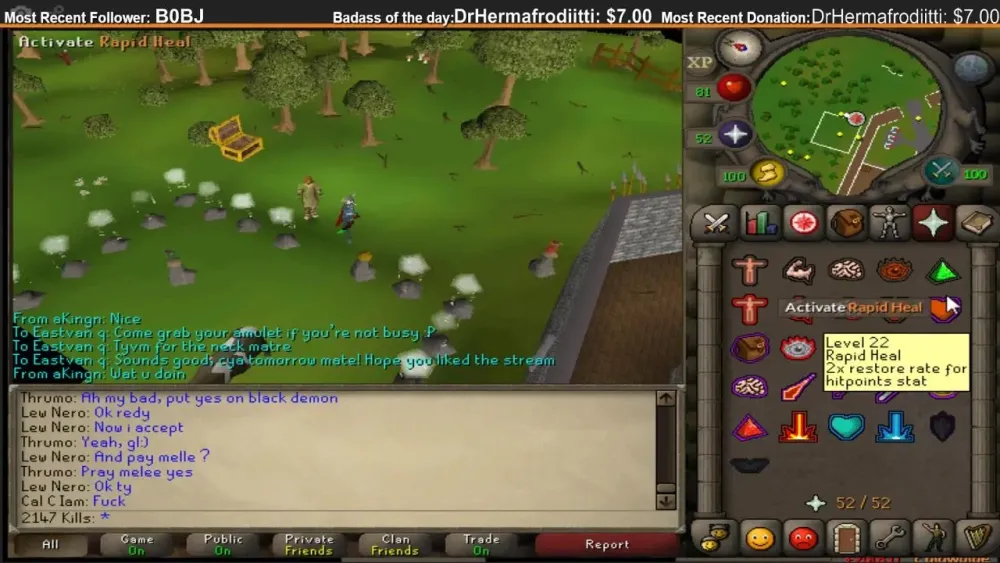Your cart is empty
OSRS Best Allotment for Money Maximizing Farming Profits in 2025

In Old School RuneScape (OSRS), farming is a versatile skill that offers both experience and profit potential. Allotment patches, in particular, are a great way to generate consistent income, especially for players looking to optimize their gold per hour (GP/H). With the right crops, tools, and strategies, you can turn your farming runs into a lucrative endeavor. This guide dives into the best allotment crops for money in 2025, based on current market trends, profitability, and accessibility. Whether you’re a low-level farmer or a seasoned veteran, we’ll help you maximize your profits with practical tips and data-driven insights.
Allotment patches allow players to grow vegetables and fruits, with each patch requiring three seeds to plant. These patches are found in locations like south of Falador, north of Catherby, and southeast of Great Kourend. Most allotment patches are near compost bins, tool leprechauns, herb patches, and flower patches, making them convenient for efficient farming runs. Allotments have a 10-minute growth cycle, making them the second-fastest crop type, ideal for frequent harvests and steady income.
Key Factors for Profitable Allotment Farming
Several factors influence profitability when farming allotments:
- Seed Cost: Low-cost seeds with high-value yields maximize profit margins.
- Yield per Patch: Higher yields, boosted by compost and magic secateurs, increase returns.
- Market Prices: Grand Exchange prices fluctuate, so checking current trends is crucial.
- Protection Costs: Paying farmers or planting protective flowers affects net profit.
- Farming Level: Higher levels unlock better crops and improve yields.
Top Allotment Crops for Profit in 2025

Based on current OSRS market data and player discussions, certain allotment crops stand out for their profitability. Below, we analyze the best options, considering seed costs, yield potential, and market demand.
Watermelons: The Reliable Choice
Watermelons are a staple for mid-level farmers due to their balance of accessibility and profit. At 47 Farming, watermelon seeds are relatively cheap, and their produce can be used for ultra compost or sold for profit.
- Seed Cost: ~30 GP each (90 GP per patch).
- Yield Value: ~500-600 GP per watermelon, with 8-12 per patch using ultra compost.
- Protection: Nasturtiums in the flower patch or payment (10 curry leaves).
- Profit Estimate: ~4,000-6,000 GP per patch.
Watermelons are particularly valuable for players crafting ultra compost, as they’re a key ingredient. Their consistent demand in the Grand Exchange makes them a safe bet for steady profits.
Snape Grass: High Demand, High Returns
Snape grass, unlocked at 61 Farming, has surged in popularity due to its use in prayer potions and other high-level potions. Its profitability makes it one of the best allotment crops for 2025.
- Seed Cost: ~300-400 GP each (~900-1,200 GP per patch).
- Yield Value: ~300-350 GP per snape grass, with 10-15 per patch using ultra compost.
- Protection: White lilies in the flower patch or payment (8 white berries).
- Profit Estimate: ~2,500-4,500 GP per patch.
Snape grass is highly profitable due to its demand in herblore, but its higher seed cost requires a larger initial investment. It’s ideal for players with 61+ Farming and access to multiple patches.
Strawberries: Low-Level Profit Option
For players with 31 Farming, strawberries offer a low-barrier entry to profitable allotment farming. They’re less lucrative than watermelons or snape grass but are great for beginners.
- Seed Cost: ~10-15 GP each (~30-45 GP per patch).
- Yield Value: ~100-120 GP per strawberry, with 6-10 per patch.
- Protection: Payment (2 baskets of apples) or marigolds in the flower patch.
- Profit Estimate: ~600-1,200 GP per patch.
Strawberries are a solid choice for early-game farmers, especially free-to-play (F2P) players, as they require minimal investment and provide decent returns.
Profit Comparison Table
To help you choose the best crop, here’s a comparison of the top allotment crops based on profitability, assuming ultra compost and magic secateurs are used:
| Crop | Farming Level | Seed Cost (Per Patch) | Avg. Yield Value (Per Patch) | Est. Profit (Per Patch) |
|---|---|---|---|---|
| Watermelons | 47 | 90 GP | 4,000-7,200 GP | 4,000-6,000 GP |
| Snape Grass | 61 | 900-1,200 GP | 3,000-5,250 GP | 2,500-4,500 GP |
| Strawberries | 31 | 30-45 GP | 600-1,200 GP | 600-1,200 GP |
Note: Profits vary based on market prices and yield. Check the Grand Exchange regularly for accurate estimates.
Maximizing Allotment Profits: Tips and Tricks
To boost your allotment farming profits, consider these strategies that leverage game mechanics and efficiency:
Use Ultra Compost and Magic Secateurs
Ultra compost significantly increases yield and reduces disease risk, while magic secateurs (from Fairytale I – Growing Pains) boost harvest by 10%. These are non-negotiable for serious farmers aiming for maximum GP/H.
Equip Amulet of Bounty
The amulet of bounty gives a 10% chance to use only one seed per patch instead of three, reducing seed costs. It’s especially useful for expensive seeds like snape grass.
Protect Crops Efficiently
Planting white lilies in nearby flower patches protects all allotment crops, eliminating the need for farmer payments. Alternatively, use the cheapest payment option for each crop if lilies aren’t available.
Optimize Farming Runs
Plan your runs to hit all allotment patches efficiently. Use teleports like the Ardougne cloak, Xeric’s talisman, or skills necklace to minimize travel time. With 9 allotment patches (2 per major location), a single run can yield tens of thousands of GP.
Monitor Grand Exchange Prices
OSRS market prices fluctuate, so check the Grand Exchange before planting. Snape grass, for example, can spike during herblore training events, boosting profits.
Alternative Profit Strategies with Allotments
Beyond direct crop sales, allotments can support other money-making methods, enhancing your overall GP/H.
Ultra Compost Production
Watermelons are a primary ingredient for ultra compost, which is in high demand for herb farming. Instead of selling watermelons, use them to create ultra compost and sell it or use it to boost your own herb runs, which are far more profitable (e.g., snapdragons or toadflax).
Farming Guild Contracts
At 45 Farming and 60% Hosidius favor, Farming Guild contracts assign random crops, including allotments. Completing these can yield seed packs, which may contain high-value seeds like magic or redwood, adding significant profit to your runs.
Combine with Herb and Flower Runs
Since allotment patches are near herb and flower patches, integrate them into a full farming run. Planting snapdragons in herb patches and limpwurt roots in flower patches can net millions per run, with allotments providing supplementary income.
Conclusion: Choosing the Best Allotment Crop for You
Selecting the best allotment crop depends on your Farming level, budget, and goals. For low-level players, strawberries offer an accessible entry point with minimal investment. Mid-level farmers should focus on watermelons for their versatility and ultra compost potential. High-level players with 61+ Farming will find snape grass to be the most profitable due to its high demand in herblore. By using ultra compost, magic secateurs, and efficient run strategies, you can turn allotment farming into a reliable gold-making method in OSRS. Regularly check Grand Exchange prices and consider integrating allotments with herb runs and Farming Guild contracts to maximize your profits in 2025.

